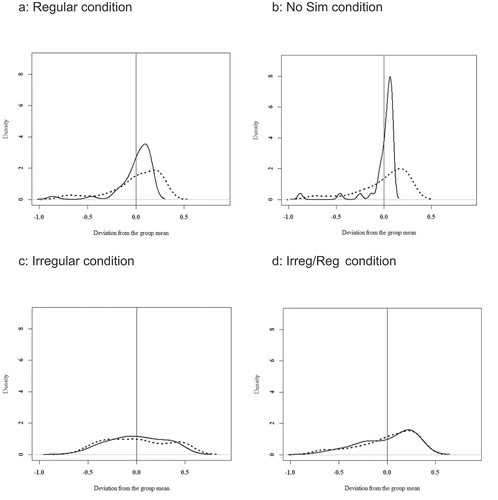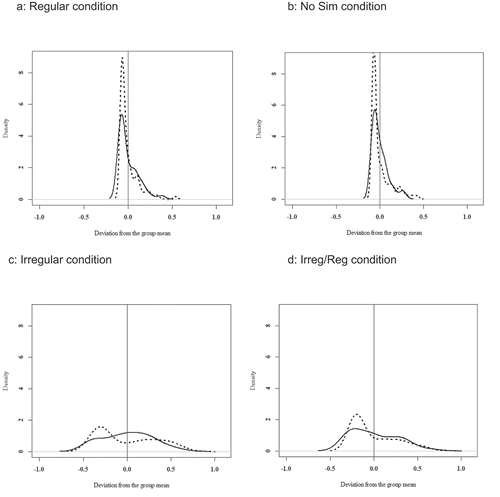Figures & data
Table 1. Percentages of -t and -n participle overapplications in bilingual corpus data
Table 2. Percentages of -t and -n participle responses with and without stem change by Condition and Group
Table 3. Fixed effects from the model for -t (vs. -n) participle suffixation
Table 4. Fixed effects from the model for participles with (vs. without) stem changes
Table 5. Correlation coefficients (r) between participant-level variables
Figure 3. AoA by proportion of -t participles in the two participant groups: black straight line = BIL group, gray shadow = confidence intervals BIL; black dash-dotted line = model estimate for CTR group across the four conditions (=0.92), black dotted lines = confidence intervals CTR group (lower = 0.84; upper = 0.96)



